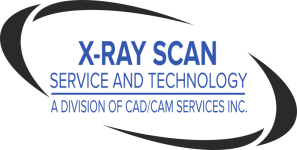X-Ray Film Scanners and Digitizers, X-Ray Film Scanning Services and Software
How a Dental X-Ray Film Scanner Speeds Insurance Claims
posted Mar-5-2015According to Delta Dental, one of the largest dental insurers in the U.S., most of the claims they get don’t need documentation, but for some procedures, supporting documentation such as x-rays and charts help them to determine if treatment is covered under the patient’s benefit plan.
 One such example is when they receive a clam for a cast restoration. In this instance, they need to review a preoperative x-ray to see if the contractual criterion has been met for coverage. They need to see the x-ray in order to determine whether so much tooth structure has been lost from caries or fracture that a direct amalgam or resin restoration would not be an adequate restoration.
One such example is when they receive a clam for a cast restoration. In this instance, they need to review a preoperative x-ray to see if the contractual criterion has been met for coverage. They need to see the x-ray in order to determine whether so much tooth structure has been lost from caries or fracture that a direct amalgam or resin restoration would not be an adequate restoration.
In addition there are other restorative procedures, implant services and prosthetics claims that require X-rays submission. If a dentist is still using film x-rays, providing accurate x-ray documentation for insurance claims can be a problem. Depending upon the population that a dentist sees, 80% or more of patients may have insurance that requires the patient’s x-rays to process claims.
For many dentists, this means sending out original X-rays, even though they do not like to part with the originals, because they may need to submit the patient to the cost and discomfort of duplicate X-rays if the originals are lost. Some dentist try using duplicating film to make copies of our x-rays, but this can be very time consuming and the image quality of the duplicates is often not good enough for the insurer to use for the claim, resulting in delay while the original X-rays are submitted anyway.
Compounding the problem is the fact that different insurance companies have different requirements about WHEN to enclose x-rays with a claim. In some cases, it is necessary in others it is not. Therefore, the first step in filing a claim is often making a judgment call about whether to include x-rays. Because of this, many dentist opt to just include the x-ray with every claim.
This procedure means that the staff has to monitor status of every claim to make sure the x-ray is returned – time consuming for the staff — and still x-rays would turn up missing during this process resulting in calling the patient to reschedule an exam just to take additional x-rays or scheduling more time to take additional x-rays at the patient’s next scheduled exam.
Even if the x-rays are returned safely, there is still the need to refile them, which sometimes doesn’t get done in a timely manner, and can result in the human error of misfiling, again raising the possibility an imaging exam would need to be repeated. Or, the x-ray doesn’t get filed in time for the patient’s return visit, and time is lost looking for the x-ray while the patient sits in the chair waiting.
A Dental X-ray Digitizer Solves the Problem
By digitizing X-ray film and printing copies from the digital files, dentists who still use film can retain the originals while sending a copy to the insurance company. This often works as an excellent transitional solution until the dentist converts completely to digital X-ray equipment.
When the dentist converts to a fully digital solution, he can use the dental film digitizer to convert all of the archived x-ray film to digital records. Even once his office has gone fully digital, he will still need to retain the x-ray film digitizer in order to scan and incorporate x-rays that are sent to him for referral and consultation.

